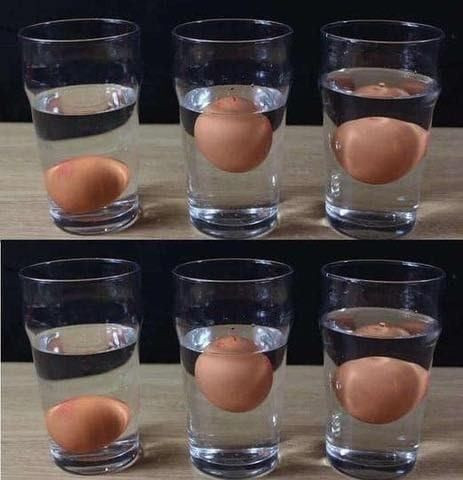1. The Float Test (Water Test)
How to do it:
Place the egg in a bowl of cold water.
Sinks and lays flat on the bottom: Very fresh
Sinks but stands upright: Still okay, but use soon
Floats: Rotten — throw it away
Why it works:
As eggs age, the air cell inside grows larger, making the egg more buoyant.
2. Sniff Test
How to do it:
Crack the egg into a bowl and smell it.
Fresh egg: No noticeable smell
Bad egg: Strong, sulfur-like or rotten odor — unmistakably bad
Important: Always smell it after cracking — don’t rely on the shell alone.
3. Shake Test (Less Common)
How to do it:
Hold the egg up to your ear and shake gently.
Fresh egg: Little to no sound
Older or bad egg: Sloshing sound from the liquid moving inside (yolk and white have broken down)
4. Check the Appearance After Cracking
What to look for:
Fresh egg: Yolk is round and firm, whites are thick and sit tightly around the yolk
Older egg: Yolk is flat, and whites are thin and watery
Rotten egg: Discoloration, unusual texture, or bad smell
5. Check the Expiration or “Pack Date”
How to use it:
Most cartons have a “sell-by” or “use-by” date.
In the U.S., a 3-digit Julian date (001 = Jan 1, 365 = Dec 31) shows when the eggs were packed.
Eggs are typically good for 3–5 weeks after the pack date if refrigerated properly.
